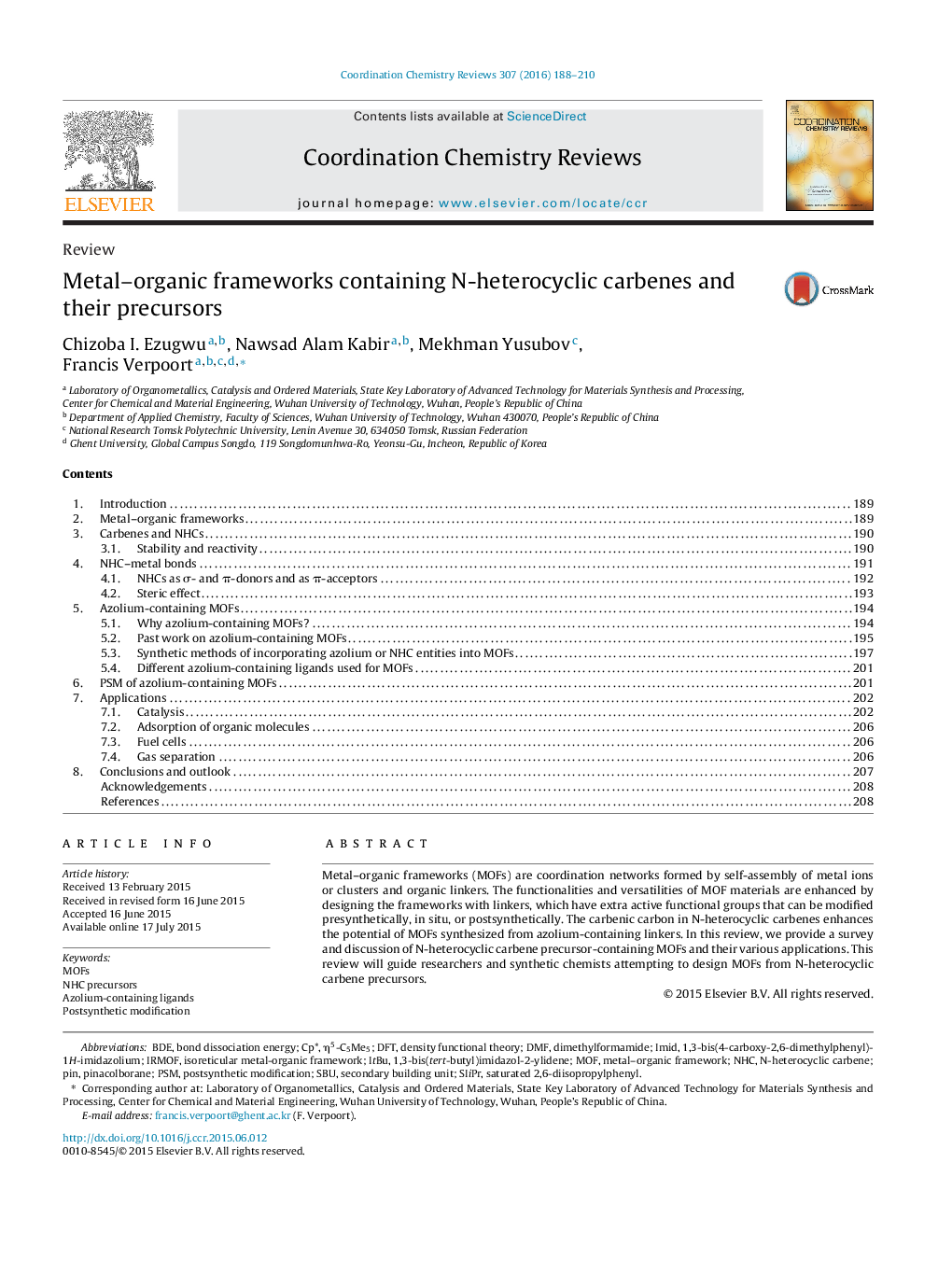| Article ID | Journal | Published Year | Pages | File Type |
|---|---|---|---|---|
| 1299065 | Coordination Chemistry Reviews | 2016 | 23 Pages |
•N-Heterocyclic carbene (NHC) precursors-containing MOFs are reviewed.•Azolium linkers employed for synthesis of MOFs.•NHC precursors-containing MOFs accumulate the best characteristics from both NHC and MOFs.•Immobilization of the homogenous NHC complexes.•Post-synthetic modification of azolium-containing MOFs and their applications.
Metal–organic frameworks (MOFs) are coordination networks formed by self-assembly of metal ions or clusters and organic linkers. The functionalities and versatilities of MOF materials are enhanced by designing the frameworks with linkers, which have extra active functional groups that can be modified presynthetically, in situ, or postsynthetically. The carbenic carbon in N-heterocyclic carbenes enhances the potential of MOFs synthesized from azolium-containing linkers. In this review, we provide a survey and discussion of N-heterocyclic carbene precursor-containing MOFs and their various applications. This review will guide researchers and synthetic chemists attempting to design MOFs from N-heterocyclic carbene precursors.
Graphical abstractFigure optionsDownload full-size imageDownload high-quality image (250 K)Download as PowerPoint slide
